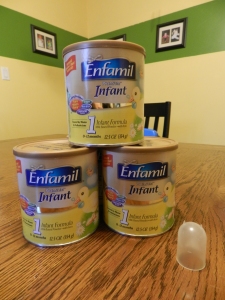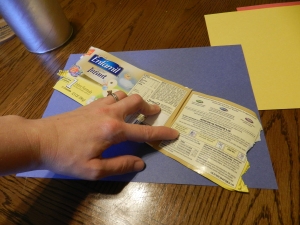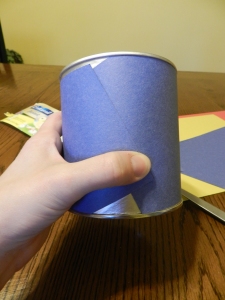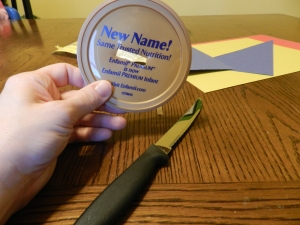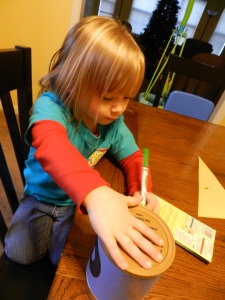Remember you own preK or kindergarten?
I sure do! As a kindergartener I remember hours of fun; moving from one area of the room to the next. Feeling like a grown up being able to find exactly what I needed, being able to put it away on my own, having freedom to travel the room choosing what to do.
Have any of you ever worked at a preschool? Visited a daycare?
I have worked in several as a work-study job and in many others as a substitute teacher. While studying in college to earn my Psychology degree I remember going back and forth between class and subbing. It was amazing to see the things I was learning in class in a tangible way as I watched the children. "Centers" help hone in their creativity. Simplifies so while still having choices they are not overwhelmed. Simple organization goes a long way in making them feel secure and not scattered like their toys. Here are the centers we have INside:
Manipulative Center
We currently have lots of different manipulative: Puzzles, baby toy manipulative, Playdough, etc. These toys and tools enhance children's fine motor skills and helps strengthen their hands, helps with eye-hand coördination, helps improve their writing skills.
Art Center
The art and Playdough supplies are on the top shelves because I don't yet allow my kids to do these things without supervision or at least permission. We do these while the "baby" is napping. There are infinite numbers of how this center developes creativity in children as well as motor skills through working with the Playdough, steering scissors, maneuvering glue, paper and other supplies, and yelling writing utensils.
Music Center
We currently have lots of different instruments that all fit on this shelf {minus the large piano} including record player, piano, 2 microphones, bongos, radio, and 5 maracas. This center may seem like a pointless reason to have unbearable noise but music can "enhance the intellectual development of children, stimulate brain function, and produce gains in test scores." (1)
Block Center
We currently have a set of large Lego blocks {multi colored} and a small set of Jinja blocks {light wooden brown}. These are great for all ages. Just some of the possibilities for learning are: construction, transformation, measurement, spatial relationships, classification. It can even built language skill when they are asked to tell about their creation.
Board Game Center
We currently have LOTS of board games. This shelf only contains the building, matching, and simple games they can do on their own.
Little People Center
We currently have a set a basket of people, a basket of animals, and a few vehicles for the Little People. This center is similar to the dramatic play center but has smaller 'dolls' to play with works as a 3rd person play, pretending what someone else is doing rather than yourself. We often add empty boxes to this play as furniture, buildings, etc.
Vehicle Center
We currently have this center divided into trucks/trains and cars/buses just because we have so many. Our favorite thing to do with our vehicles is
Dramatic Play Center
Currently we have a large kitchen set with tons of food play {lots of variety}. We also have a 'dress up' corner, baby shelf, and lots of baby accessories throughout the playroom. This provides the opportunity for learning rolls for later in life: Parenting, cooking, home maintenance, cleaning, and endless number of other career options that can rotate in and out of this long-term center.
Reading Center
We currently have a single book shelf that houses all of our children's book {except a small basket of "bed time" books and Bibles in the girls bedroom}. I have them sorted according to age-appropriate by height {unfortunately my ~18 month old can almost reach the top shelf}. I have the baby books {ie board books with mainly pictures} on the bottom shelf accessible to all ages but most enticing to the youngest {shortest}. THe middle shelf has more board books that contain more words {needing longer attention span} and are reachable by all kids. The top shelf has "real page" books/paper back books as well as books with pop-ups, or pieces that would be better read by an older child or with help. Having access to books builds a love for reading. They feel more like toys or privilege and not an assignment or chore. This center developes a love of words, encourages motor skills, thinking skills, reading comprehension, as well as the ability to sit still building on attention span. "The number of words one knows as well as the depth of understanding of those words is related to the ability to think."
I couldn't find a simple way to summarize the importance of reading so I've added links to some articles about reading at an early age:
10 Reasons Why You Should Read to Your Kids
What is the importance of reading to a child?
Another article on Ten {more} Important Reasons to Read to Your Child

That may sound complicated but we basically group like things together to help my children know where to find things, where to put them away, and makes it easier to have them play with few things at once cutting down on mass chaos in the playroom.
Do you have a toy "system" that works for you? Please share!!!
Another great read is by Alina Joy over at HC, My Toy System That Keeps Itself Clean!
Return for 5 Days of Organizing & Cleaning TOYS into centers!!!
Citations
(1) Rausher, 1995 via Isbell & Raines "Creativity and the Arts with Young Children 2nd edition


























